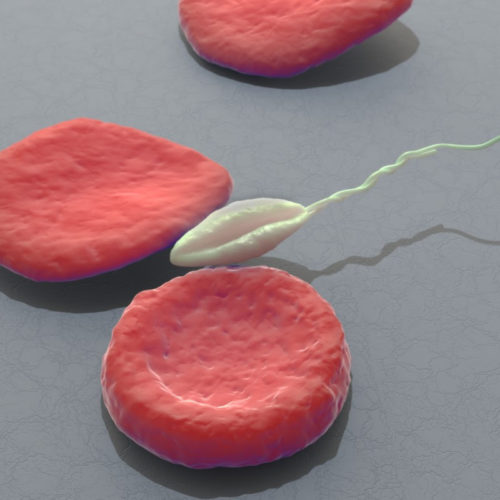By Rich Haridy, September 30, 2020 Researchers gene edited the Leishmania major parasite so it could be used in a vaccine without causing disease Every year around two million people suffer suffer from a skin disease called leishmaniasis, which is caused by the Leishmania major parasite. Humans have battled with this parasite for centuries, and some cultures have practiced...
Tag: <span>CRISPR gene</span>
EXPERTS HORRIFIED BY LEAKED CRISPR BABY STUDY
THE PAPER ACCOMPANYING THE CONTROVERSIAL EXPERIMENT WENT UNPUBLISHED — UNTIL NOW. BY KRISTIN HOUSER / DECEMBER 04 2019 Chinese scientist He Jiankui’s creation of the world’s first gene-edited human babies was undoubtedly one of the most impactful science stories of 2018. But for as much attention as the experiment received, the paper detailing it was never actually published — until now....
Super-precise new CRISPR tool could tackle a plethora of genetic diseases
The system allows researchers more control over DNA changes, potentially opening up conditions that have challenged gene-editors. Heidi Ledford For all the ease with which the wildly popular CRISPR–Cas9 gene-editing tool alters genomes, it’s still somewhat clunky and prone to errors and unintended effects. Now, a recently developed alternative offers greater control over genome edits — an advance...
Landmark Gene-Editing Work May Help Restore Vision
Researchers will use CRISPR technology to try to help patients with rare disease By Newser Editors and Wire Services Posted Jul 25, 2019 12:42 PM CDT (NEWSER) – Patients are about to be enrolled in the first study to test a gene-editing technique known as CRISPR inside the body to try to cure an inherited...
Handheld CRISPR Device Diagnoses Genetic Disease in 15 Minutes
The device could make genetic testing easier and more accessible. Dan Robitzski Standardized Testing To help make genetic screening easier and more accessible, scientists built a handheld device that uses CRISPR gene-editing technology to scan for mutations much more easily than existing labs can. The device, which Keck Graduate Institute bioengineer Kiana Aran told Futurism...
Breakthrough in muscular dystrophy research after scientists edit DNA to rebuild muscles Breakthrough in muscular dystrophy research after scientists edit DNA to
Duchenne muscular dystrophy affects as many as one in every 3,500 boys It kills patients by their mid-30s by weakening the heart and breathing muscles Scientists have managed to edit DNA to strengthen weakened muscles Levels of a vital muscle protein rose to up to 92 percent of normal amounts Scientists have made a breakthrough...
New CRISPR technique skips over portions of genes that can cause disease
UNIVERSITY OF ILLINOIS AT URBANA-CHAMPAIGN CHAMPAIGN, Ill. — In a new study in cells, University of Illinois researchers have adapted CRISPR gene-editing technology to cause the cell’s internal machinery to skip over a small portion of a gene when transcribing it into a template for protein building. This gives researchers a way not only to eliminate a mutated gene...
CRISPR Study Shows Cas12a May Select DNA Target Sequences More Precisely Than Cas9
NEW YORK (GenomeWeb) – The Cas9 enzyme is known to have certain problems with binding to off-target DNA sequences, but for the most part, it is still considered to be the gold standard CRISPR enzyme for genome editing. However, in a new study in Molecular Cell today, researchers from the University of Texas at Austin...
A simple guide to CRISPR, one of the biggest science stories of the decade
It could revolutionize everything from medicine to agriculture. Better read up now. One of the biggest and most important science stories of the past few years will probably also be one of the biggest science stories of the next few years. So this is as good a time as any to get acquainted with the powerful new...
Ethicists advise caution in applying CRISPR gene editing to humans
An artist’s rendering of the powerful genome editing tool, CRISPR-Cas9. Ethicists have been working overtime to figure out how to handle CRISPR, the revolutionary gene-editing technique that could potentially prevent congenital diseases but could also be used for cosmetic enhancements and lead to permanent, heritable changes in the human species. The latest iteration of this...

